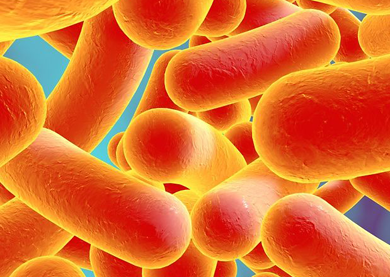Geometry-induced-protein-pattern-formation
Dominik Thalmeier, Jacob Halatek, Erwin Frey
 Protein patterns play a major role in establishing cell polarity and guiding cell division processes. Examples include spatio-temporal oscillations in the MinCDE system of E. coli, and the formation of narrow/tightly localized protein caps in the Cdc42 system of S. cerevisiae. The formation of these patterns requires biochemical processes that sense and adapt to the geometry of the organism. Previously suggested mechanisms either require proteins that are able to directly sense membrane curvature, or are based on nonlinear diffusion-reaction systems that can generate geometry-adapted patterns.
Protein patterns play a major role in establishing cell polarity and guiding cell division processes. Examples include spatio-temporal oscillations in the MinCDE system of E. coli, and the formation of narrow/tightly localized protein caps in the Cdc42 system of S. cerevisiae. The formation of these patterns requires biochemical processes that sense and adapt to the geometry of the organism. Previously suggested mechanisms either require proteins that are able to directly sense membrane curvature, or are based on nonlinear diffusion-reaction systems that can generate geometry-adapted patterns.
In Bacillus subtilis, there is good evidence suggesting that DivIVA recognizes negative membrane curvature directly by a mechanism which is intrinsic to this cell division protein. In contrast, enrichment of MinD at the cell poles in E. coli or formation of Cdc42 caps in S. cerevisiae is an emergent property of the collective dynamics of several proteins. A clear disadvantage of such self-organized symmetry breaking by means of a dynamical instability is that the kinetic parameters must be fine-tuned in order to allow the establishment of a stable polar pattern. This need for fine-tuning also poses a particular challenge for the utilization of functional, pattern forming modules in reconstituted synthetic systems.
In the paper we show that adaptation to geometry can emerge from generic chemical dynamics without any need for parameter tuning or explicit curvature sensing. We present a simple reaction module based on generic reactions (membrane attachment and detachment, cytosolic nucleotide exchange) that establishes geometry-dependent patterns in all kinetic configurations. The key component is an NTPase protein that cycles between membrane-bound and cytosolic states in a nucleotide-dependent manner. Our analysis shows that an inhomogeneous density profile is established on the membrane in the generic case where the membrane affinities of NTP-and NDP-bound forms differ. Membrane-bound patterns can be further amplified if the membrane affinities are effectively increased by cooperative membrane binding (e.g. due to dimerization). This mechanism is highly robust because the initial state of uniform equilibrium is simply replaced by a unique and stable patterned state.
Experimental support for the proposed mechanism comes from E. coli mutants in which both EcMinD and EcMinE were replaced by chloroplastic AtMinD. We predict that cooperative membrane binding of the ADP-bound form of AtMinD leads to a bipolar pattern along the long axis of the cell, as observed. Due to its generic nature, the proposed pattern-forming mechanism could also serve as a hitherto unrecognized spatial template in many other bacterial systems. Moreover, the robustness of the mechanism enables self-organized optimization of protein patterns by evolutionary processes. Finally, the proposed module can be utilized to establish geometry-sensitive protein gradients in synthetic biological systems.
We believe that our findings point to a novel general principle by which protein dynamics may sense cell geometry and robustly establish protein patterns.
Image: Dr. Kateryna/ fotolia.com

